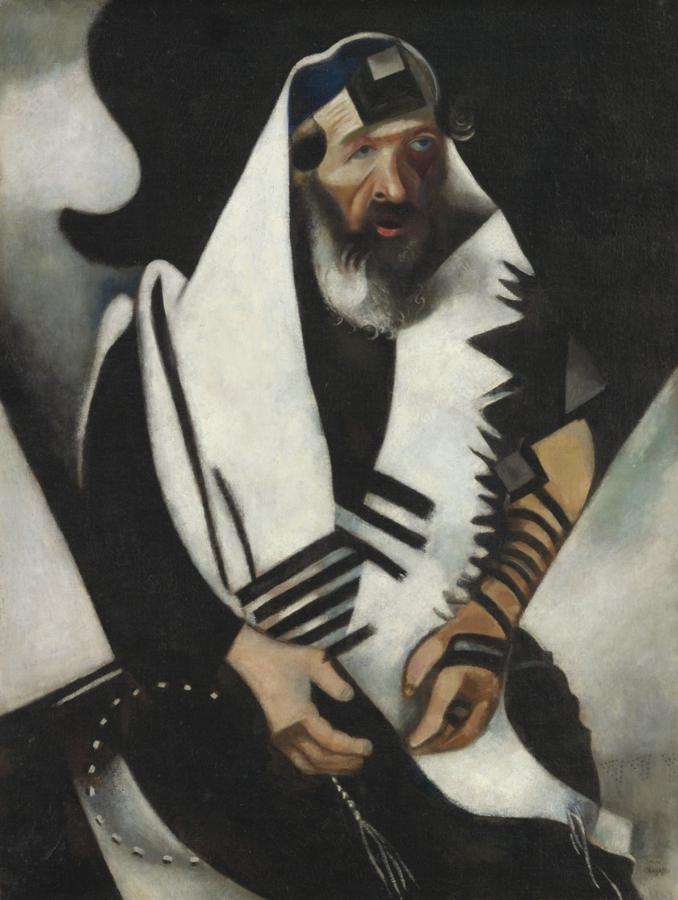Chagall, Marc (1887-1985)
Le Juif priant (The Praying Jew)
1923
Oil on canvas, 116.8 × 89.4 cm
Art Institute of Chicago, Chicago
© 2018 Artists Rights Society (ARS), New York / ADAGP, Paris
Signed, l.r.: “MArc / ChAgAll”
Marc Chagall had a prolific career that spanned more than eight decades of the twentieth century. While his work often exhibits influences of the contemporary movements he encountered in France and Germany, his subjects and decorative lyricism reveal his love of Russian folk art and his roots in Hasidic Judaism.
In his 1931 autobiography, My Life, Chagall related how, while visiting Vitebsk (present-day Belarus), the city in which he was born, he realized that the traditions in which he had grown up were fast disappearing and that he needed to document them. He paid a man to pose in his father’s prayer clothes and then painted him, limiting his palette primarily to black and white, as befit the solemnity of the subject. This portrait is noteworthy for the simplicity of its execution; nonetheless, its striking patterns, abstract background, and the slightly distorted features of the model demonstrate Chagall’s absorption of modern trends, especially Cubism.
Chagall often painted variants or replicas of works he particularly loved. The Art Institute’s Praying Jew is one of three versions of this composition. He painted the original canvas in 1914, and when he traveled back to Paris in 1923, he took this painting with him. He learned upon his return that much of the work he had left in France had been lost during World War I. This prompted him to make two versions of The Praying Jew before it left his studio: they are the present work and another in the Ca’ Pesaro, Venice; the original is now in the Kunstmuseum, Basel. The later compositions differ from the original only in small details. (AIC)
